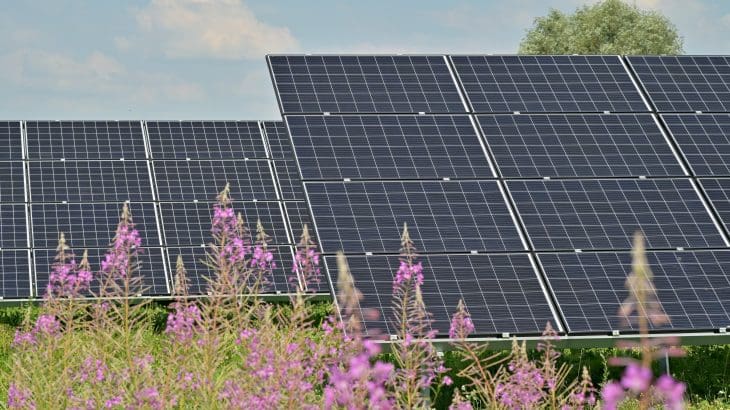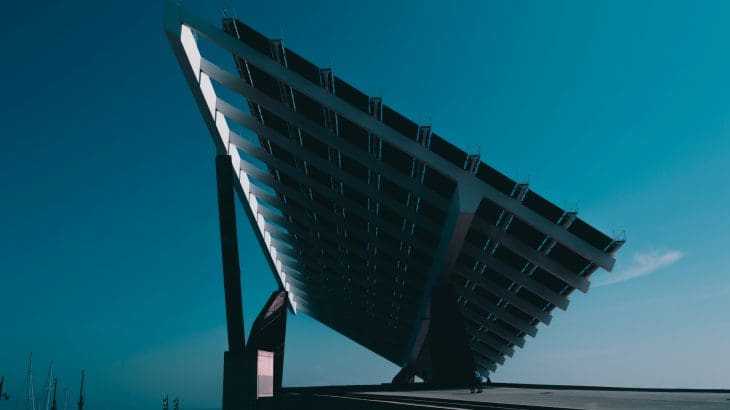Did the much-touted clean energy transition in the Caribbean survive intact through the pandemic? The consensus, it seems, is that we’re licking our wounds – but that it’s alive and kicking. New Energy’s editorial team spoke to Caribbean specialists and industry insiders to check the region’s vital signs, gauge market sentiment, and get a sense for trends and markets we should be watching in 2021.
If 2017 was the year in which hurricanes Irma and Maria stress-tested the grid resiliency of the region, so 2020 was the year which tested its economic and institutional resilience.
By and large, it has come through unscathed. Regional utilities are solvent in the wake of a difficult year and Bruce Levy, CEO of BMR Energy, tells us that, overall, he is “impressed” with the “reliability of electricity systems throughout the region in the face of quarantines and lockdowns and curfews.”
So we survived, but those expecting a boom in the renewables market may be waiting a while. Tourists will return, and will eventually return in droves, but that’s not going to be an overnight phenomenon. In the meantime, the knock on effect on the demand for electricity will put a dampener on prospects for investment.
Cautiously optimistic for 2021
Notwithstanding, Robert Blenker, CEO of WRB Energy, was one of many in the market we spoke to who voiced cautious optimism. He believes there will be an uptick and points to the need to fulfill national targets, the availability of inexpensive capital, and improving regulation across the region.
2020 was the year which tested its economic and institutional resilience.
Fernando Alvarado, CEO of Deetken Impact Sustainable Energy, agrees. He expects to see increased transaction flow in 2021, asserting that the investment opportunities are “still there.”
In a time of economic hardship, renewables can’t be a luxury line item. Economically, they need to stand on their own two feet. Chris Burgess, Director of Projects at Rocky Mountain Institute, makes the case that “renewable energy has proven to be more economical for island utilities over the past 3-4 years at the right scale” and that we will see increased investment as solar, wind and battery prices continue to fall. He expects to see an increase in investment every year for at least the next decade in the Caribbean.
Racquel Moses, CEO of the Caribbean Climate-Smart Accelerator, is one of many who believe that the economic case for renewables is about more than just the price per kilowatt hour. She believes that the pandemic is “forcing countries and the private sector to think about long-term recovery strategies that include job creation and future-proofing”. Her view? A vibrant clean energy market is “probably the safest bet” to get that done.
Laura Ferguson, Regional Director at the UK’s Department for International Trade, also expects to see an increase in investment in clean energy, driven in part by the need for governments across the region to fulfill their NDCs. The impact of those government pledges, she tells us, has a “ripple effect in the market with multilaterals in the region programming projects worth over GBP394m across parts of the Caribbean.”
In the midst of it all, an election in the US
January 2021 saw the inauguration of Joe Biden as President of the United States. Does it make a difference? Views are mixed, but most seem to agree that a climate activist in the White House, one who has worked closely with the Caribbean in the past, is a net positive and that, as WRB’s Blenker puts it, “a rising tide floats all boats”.
Justin Ram, former director of economics at the Caribbean Development Bank and currently CEO of GSEC, a Fintech company, is circumspect. He points to the fact that the Caribbean has always had a reasonably good relationship with Washington and argues that, while the Caribbean should welcome the new administration’s push on renewable energy and its return to the Paris accord, “we don’t know which direction America could be heading in 2024 so the Caribbean must chart its course knowing where it wants to be in 2030, in 2040, and in 2050.”
The pandemic is “forcing countries and the private sector to think about long-term recovery strategies that include job creation and future-proofing”.
And what of Cuba? Under the Obama administration, Cuba came in from the cold, only to be isolated again in 2016. With a Democrat in the White House, and with a Democrat majority in Congress, can we expect to see a rapprochement? Most seem to think that Biden’s political capital will be tied up elsewhere and that Cuba, at least for the next couple of years, won’t get a look in. For now, renewable investors, or at least those for whom US sanctions apply, will have to watch from the sidelines.
Put your money on energy storage
As the market recovers, where can we expect to see growth? Storage, it seems, is top of mind for many. In part that’s a function of the pandemic. Jesus Martinez-Cantu, who runs SMA’s operations in the Caribbean, explains that many islands are experiencing different load patterns with the changing workplace dynamic brought about by the pandemic. He sees energy storage stepping in to provide the ancillary services needed to de-stress grids operating in that environment.
For others, with or without the pandemic, it’s just a matter of time before storage takes off. Chris Cadwell, Vice President, Renewable Energy at WRB, for one, believes that battery storage is becoming “too inexpensive and too mature to ignore”. As soon as Caribbean regulators determine how they’d like to manage the various use cases beyond ramping renewables, “it will be,” he continues, “transformative in the Caribbean, too.”
Meantime, Leclanché broke ground in December on its 35.7MW solar farm and 45.7MWh battery storage facility in St. Kitts. When it comes online, it will be the biggest project of its type in the Caribbean.
A fresh take on financing?
How is the Caribbean going to pay for the energy transition? Turns out, there’s no shortage of funds on the table. On the contrary, some would argue there’s too much capital chasing too few deals. Perhaps it’s not the volume of funds, but the price of funds that’s at issue. Can the Caribbean access inexpensive capital to build the next generation of clean energy projects? Some say that’s the role that blended finance needs to play.
Others, like Gillian Charles-Gollop, an Executive Director at CIBC FirstCaribbean, expect innovation from other quarters. She suggests that the bond market may prove to be a new source of competitive financing and this in turn may encourage, she says, “private equity or venture capital players to invest and create new investment products that could support multiple projects.” There is an equity play, too, and she describes an “exciting option” for the development of an equity fund to invest in “multiple renewable projects where risk concentration could be mitigated by a mix of projects in various countries.”
EVs, not just a passing fad in the Caribbean
In the beginning, when no-one else believed in electric vehicles, there was Megapower, a Barbados-based company which started selling EVs in 2013. Now, it seems, everyone believes. Joseph Williams who heads up the renewable energy division at the Caribbean Development Bank, is one of many we spoke to who cited EVs as a big potential growth area for the Caribbean. He believes that the global trend to electrification among big vehicle manufacturers will have a positive knock-on effect in the region. Rocky Mountain Institute’s Burgess agrees, and is “excited” about EV fleet conversions and EV buses in several of RMI’s partner countries and overseas territories. He points to Bermuda, which is moving forward with its first EV bus procurement this year, and St. Lucia, which is considering the launch of a government fleet passenger vehicle conversion program this year.
Which countries are we watching in 2021?
We asked a handful of market insiders to tell us which markets they were particularly excited about for 2021. The responses were remarkably consistent. Here are some of the highlights.
“Like everyone else,” says Racquel Moses, CEO of the Caribbean Climate-Smart Accelerator, “we’re watching Jamaica. Targeting 50% renewables by 2037, the country has been reasonably modest in their ambitions while achieving the targets that they’ve set.” With the IRP in place, the market now awaits news from the government on the first round of RFPs for the procurement of 500 MW of renewables.
In the Dominican Republic, there is a new administration with green credentials and that’s cause for optimism for many. Renewable energy advocates point hopefully at the swift restructuring of the energy sector as proof of intent. Karina Chez, Managing Partner at Kaya Energy and the founder of the national renewable association, ASOFER, is one such advocate. Luis Abinader, the new president, she explains, has appointed officials with a pro-renewable track record to key positions. ASOFER, she adds, “has met with all the relevant ministries and we are already seeing unnecessary barriers being lifted”. The word on the street? Look out for a substantial RFP for renewables this year.
Jamaica has been reasonably modest in their ambitions while achieving the targets that they’ve set.
The Bahamas and Trinidad and Tobago have long been the region’s clean energy laggards. That’s changing and both markets appear on many watchlists for 2021.
In The Bahamas, where renewable energy makes up less than 1% of the energy matrix, Malaika Masson, Senior Regional Energy Specialist at the IDB, points to a commitment to the transformation, now underway, of its energy sector through the strengthening of its institutional framework and regulatory environment. Burgess, of the Rocky Mountain Institute, also has its sights set firmly on the Bahamas. “The Bahamas is our most active partner country with a long list of project objectives for 2021.” They include their first utility scale battery energy storage system, completion of the first island-wide solar and battery storage project, the first major microgrid for a critical facility, the first aggregated procurement for solar PV across multiple sites, and the first solar and storage projects for schools that double as hurricane shelters. Taken together, asserts the IDB’s Masson, the country will avoid more than 25,000 tons of CO2 per year.
In hydrocarbon-rich Trinidad & Tobago, the government has committed to 30% renewables by 2030 and is moving aggressively to hit that target. In late January 2021, the government released plans for a feed-in-tariff. That announcement came hard on the heels of the award to Lightsource BP and Shell of a deal to build a 120 MW solar plant which, when it comes online, will be by far the biggest plant of its type in the region. Also on the cards? Green Hydrogen, which the government plans as a means to decarbonize its substantial petrochemical industry.
Barbados, with Prime Minister Mia Mottley at the helm, continues to be the poster-child for the clean energy transition in the Caribbean. The goals – 100% renewable and carbon-neutral by 2030 – are ambitious. Veronica Prado, Energy Specialist at the Inter-American Development Bank, is optimistic and points to a number of promising indicators including the new market design – specifically the liberalization of generation and storage – and the introduction in Q4 of 2020 of the long-awaited feed-in-tariff for projects up to 10 MW. Now we await news of the IRRP and a competitive framework for procurement.
The UK DIT’s Laura Ferguson, like many, is keen to see which direction Guyana, the region’s new economic giant, will take to fuel an increase in consumption as the country’s manufacturing and industrial base grows. The initial signs are promising, she says, and points to government plans to generate an additional 400 MW of installed capacity from hydro, solar, wind and biomass.
At the close of 2020, the Puerto Rico Energy Bureau, the island’s regulator, mandated that PREPA was required to procure 1,000 MW of solar and 500 MW of storage. A report released in mid-January, however, concluded that the grid could only handle 500-600 MW of additional intermittent renewables. The dispute is ongoing. Meanwhile, PREPA’s Deputy Executive Director Fernando Padilla remains optimistic. “Last year,” he says, “we worked in close collaboration with FEMA to secure the $10.7B in funding available for the reconstruction of the grid and develop PREPA’s first 10-Year Infrastructure Plan. Now that those things are behind us, PREPA can move forward on the aligned vision of the Governor, P3, PREB, and our Governing Board to meet our customer’s evolving needs, modernize our electrical grid, improve reliability and system resiliency, and substantially increase renewables – all amazing opportunities.”
The Cayman Islands, according to James Whittaker, President of the Cayman Renewable Energy Association and the founder of GreenTech Solar, “is on the verge of deploying an unprecedented amount of clean energy as we move towards our target of 70% renewable energy by 2037.” Pointing to an improving regulatory environment, Whittaker believes that as long as the Government remains committed to its National Energy Policy, “Cayman should go from regional laggard to clean energy leader in the near future starting in 2021.”
Following the Caribbean and Latin America clean energy market? Track news, events, and hear from leaders in the market when you sign up for our bi-weekly LAC Renewables & Decarbonization newsletter.


